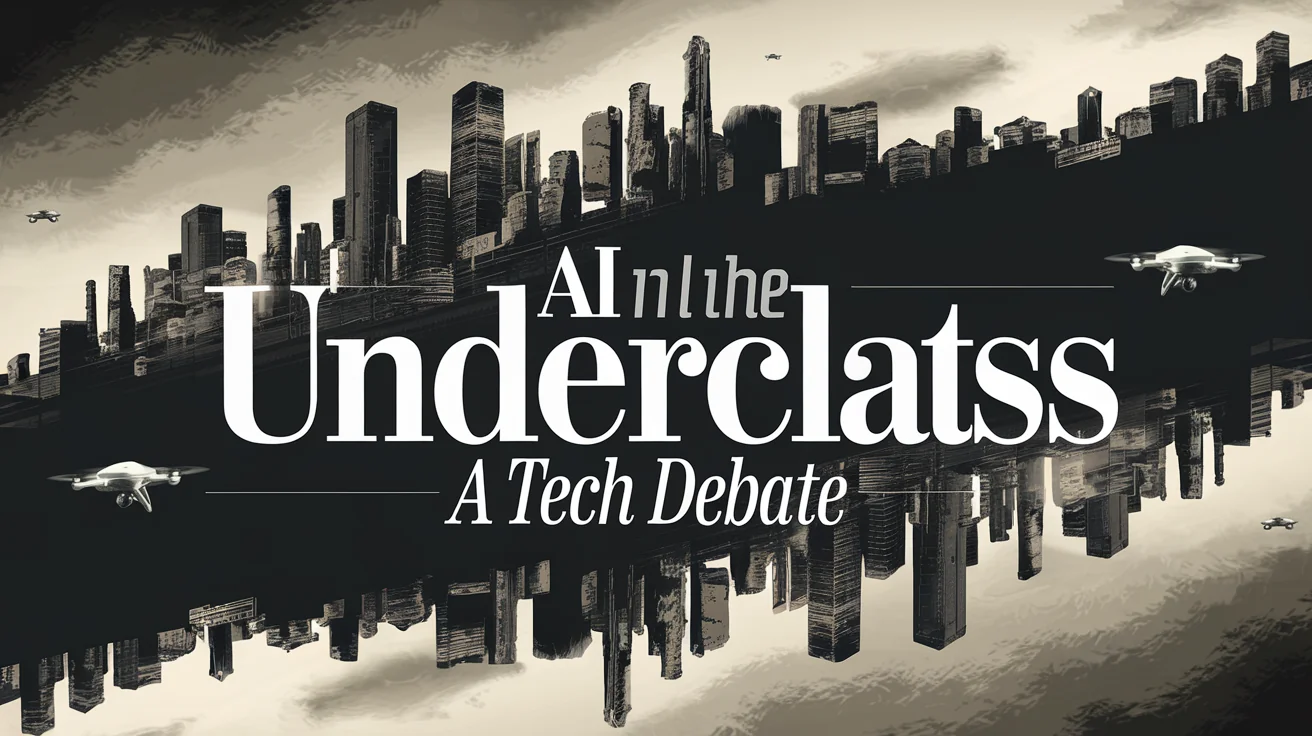AI and the Underclass: A Tech Debate

In a stark assessment of the future of work, the New Yorker has reported that the rapid advance of AI technology is set to create a “permanent underclass” of workers who are not equipped for the impending AI revolution. Citing the views of OpenAI employee Leopold Aschenbrenner, the article predicts that by 2027 AI will have the ability to exceed human capabilities substantially. This would potentially lead to AI superintelligence, which might even eliminate the need for human programmers and threaten the jobs of individuals in various professions.
This alarming perspective is echoed by Nate Soares, co-author of the provocative critique, If Anyone Builds It, Everyone Dies, who cautions against relying on traditional forms of work in the long term. Industries such as education, film, marketing, and journalism are already feeling the anxiety surrounding job security as automation looms large.
However, it is crucial to note that a significant portion of individuals already finds themselves in a precarious economic situation, often defined by inherited wealth disparities that perpetuate social inequality. The tech industry’s creation of wealth is intertwined with a growing opportunity gap, as those without financial backing for their ventures remain at risk of being pushed further into the underclass.
Reflecting on personal history, the author recounts a family lineage that faced similar challenges throughout industrial changes—from stablehands to shipyard workers, and eventually transitioning into roles affected by digital transformations. The historical pattern of industries being devastated by technological advancements underscores the need to adapt and cope with radical shifts in employment.
This sentiment is encapsulated in the author’s assertion that if AI ultimately replaces their work, it would not be unlike the vast changes experienced by prior generations. Each technological advancement—be it the spinning jenny or the computer—has fundamentally altered the workforce landscape.
As technology continues to evolve, there is an urgent need for proactive measures, such as unionization, which could provide a strong framework for ensuring worker protections in the face of an uncertain future. Episodes from history, like the response of Japanese car manufacturers in the 1970s, exemplify how unions can successfully negotiate for job security and retraining programs in response to automation.
The ongoing battle against AI encroachment is already evident, as organizations like the Writers Guild of America have sought agreements to protect their members from becoming obsolete due to generative AI technology. Their strategy does not ban the use of AI completely but rather allows for it to be a tool that writers can utilize as they see fit.
Despite the overwhelming narrative pushed by the tech industry’s advocates, it is vital to understand that AI is not an inevitability nor a sustainable solution for our economy. There are mounting concerns regarding the long-term viability of data centers driving AI growth, as highlighted by reports indicating that a significant percentage of companies testing AI have not yielded a return on investment.
Considering responses from financial institutions and academic research, a prevailing skepticism emerges around the sustainability and practicality of AI’s role in the workforce. Numerous surveys reveal widespread regret among firms that opted for automation over human labor, showcasing the hidden costs of such decisions.
The assertion by industry representatives that compensating for using AI-generated content would endanger the business model reveals deep ethical implications intrinsic to this debate. The commoditization of intellectual labor through AI reflects a concerning trend toward exploitation, warranting serious consideration of its implications for workers.
In this era of transformation, it seems strange that those at the forefront of technological advancements might be the most dispensable. This notion was humorously illustrated by the author in their creation of a “techbro bot”—an automated program analogous to the very makers of the tech bubble, highlighting the replaceable nature of even the greatest proponents of such progress.
As society navigates these turbulent waters, it is essential to recognize the core struggle lies not only in technological adaptation but in affirming our commitment to equitable labor practices and safeguarding future generations against the rising tide of automation.